I have a SkyWatcher 100mm apochromat telescope and have been learning, slowly, to take photos of celestial objects with it. I use a Nikon D-3100 digital camera at prime focus. That means the camera’s sensor is at the big lens’ focal point and I’m using no other optics to increase magnification.
The telescope has a computerized polar mount which will, once I learn to set it up and use properly, guide the telescope as the sky turns.
2020-12-07: Jupiter and Saturn
Here’s my viewing area at twilight. I have plenty of illumination from parking lot lamps. That’s Jupiter.
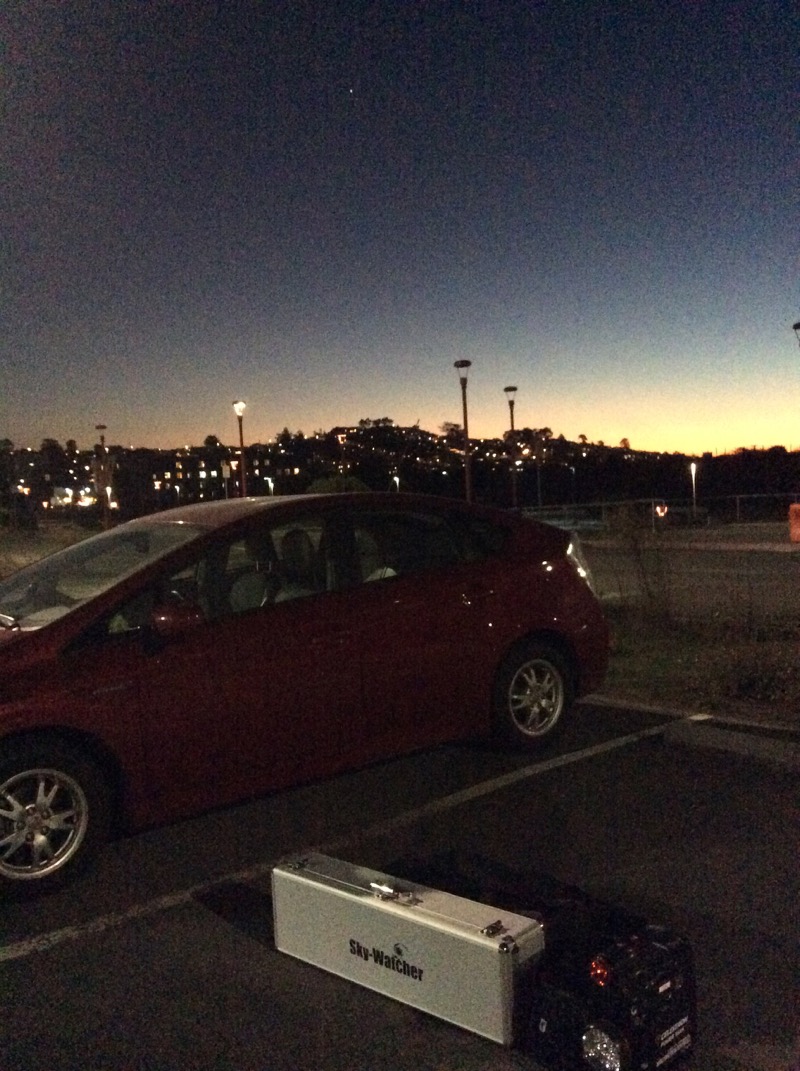
This is the view North. As you can see I had plenty of illumination for the graticule in the polar scope in the mount.
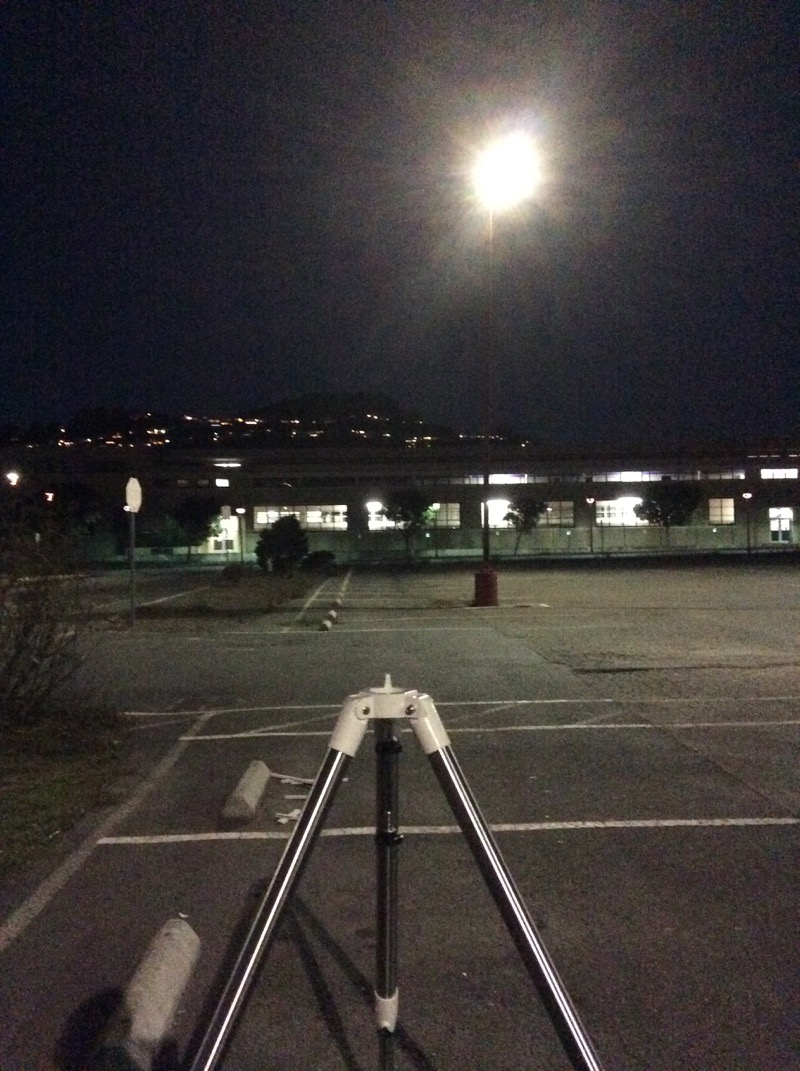
Here’s the polar mount set up on the tripod. This one has a small 10x telescope that’s used to precisely align the telescope to the North Celestial Pole.
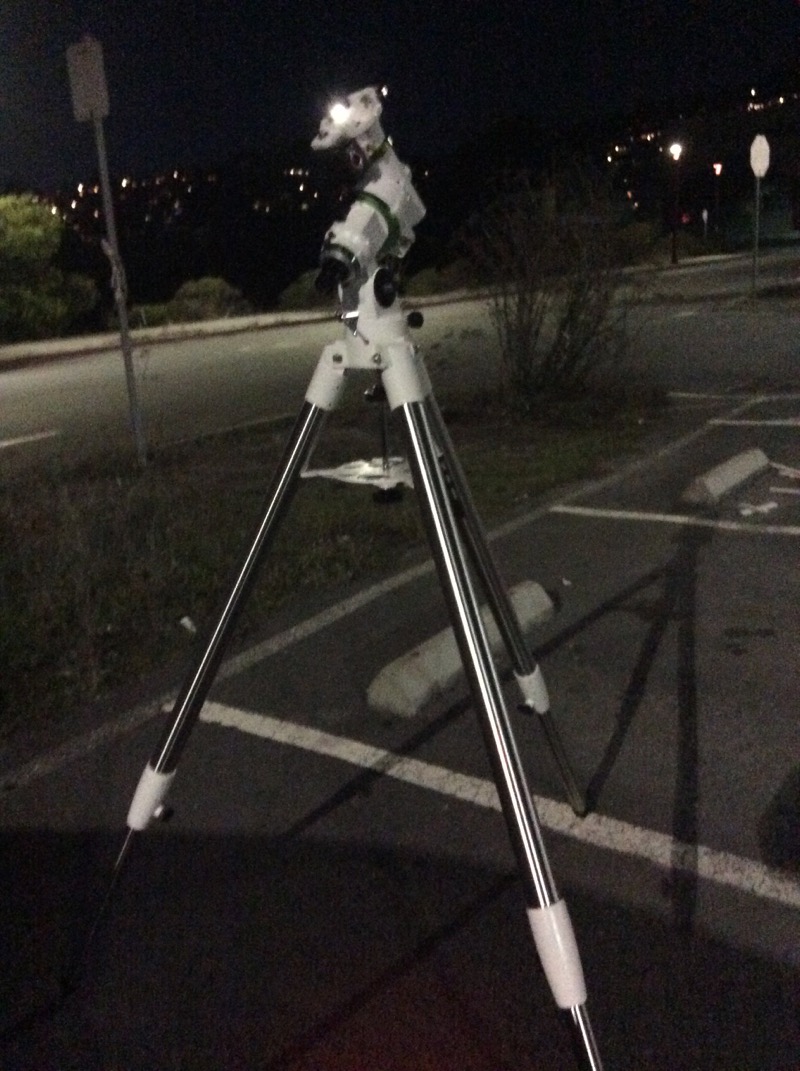
Here’s what it looks like all set up. This was from a different night of observation when I was able to set up in a much darker place.
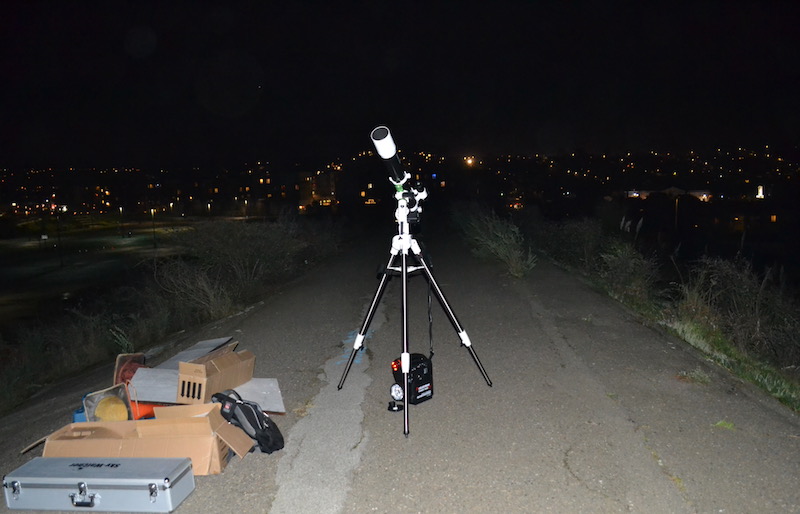
Though I was hampered by having only prime-focus, and not having set up the scope with my 5mm or 25mm eyepeieces, I got a few passable images of Jupiter and Saturn.
Now down to business. This is a 1-second exposure at 3200 ISO speed. This I took by manually squeezing the camera’s shutter release, which jiggled the telescope. That’s why the three moons are stretched out. Also 3200 ISO is way too high so there’s no detail of Jupiter at all. I was able to make out the major rings of Saturn when looking through the high-magnification eyepiece.
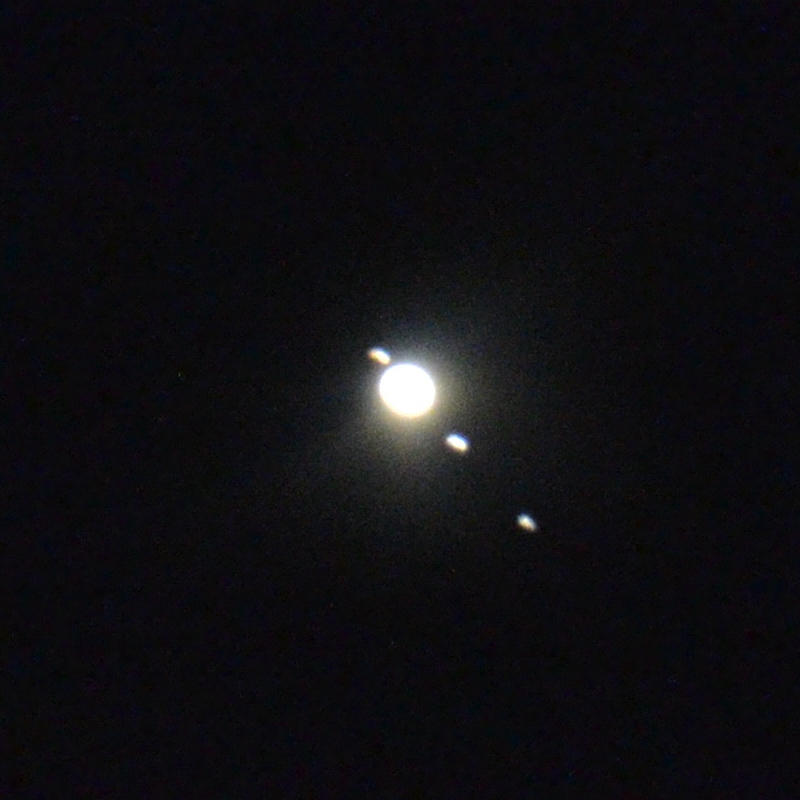
Here’s a 10-second exposure at 3200 ISO. Here I used a remote shutter release. This got some background stars and much better smoothness. The background is not black because the sky is so bright where I live. 3200 is way too high a sensitivity for exposures this long.

Here’s an image of Saturn, also at 10 seconds. The stars show that the tracking isn’t too terribly off, so the widened spot is the result of Saturn’s rings. But again I’m disappointed that I wasn’t able to resolve them. That may be because I blew out the exposure with all that sensitivity.
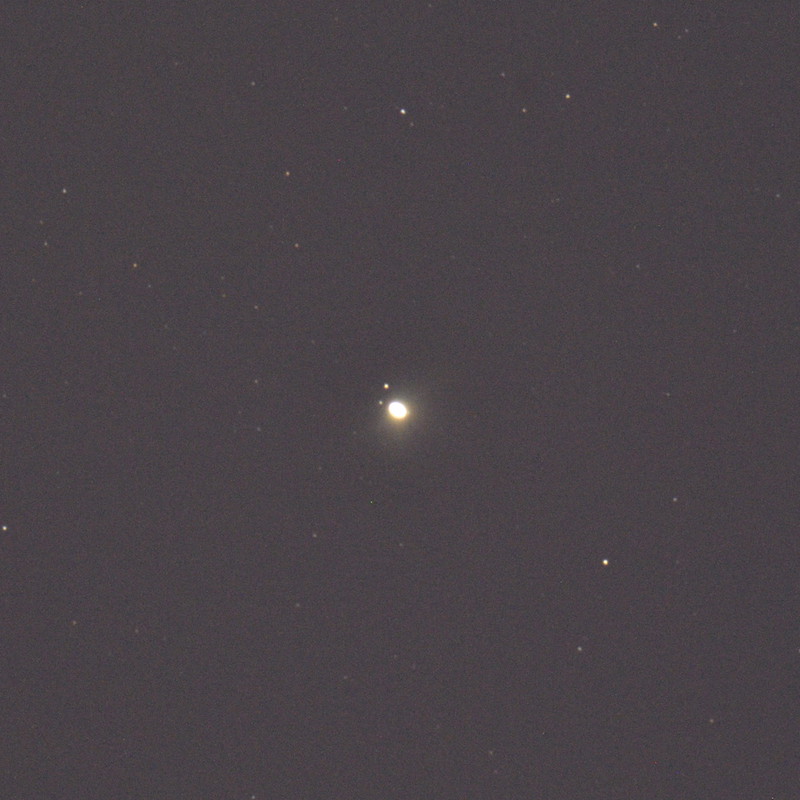
Here’s my attempt to get both planets in the same image. That’s Saturn in the upper left and a blur of Jupiter in the lower right. (Although the image I’d see though an eyepiece woudl be inverted, so’s the image through a normal camera lens, so the camera Does The Right Thing.)
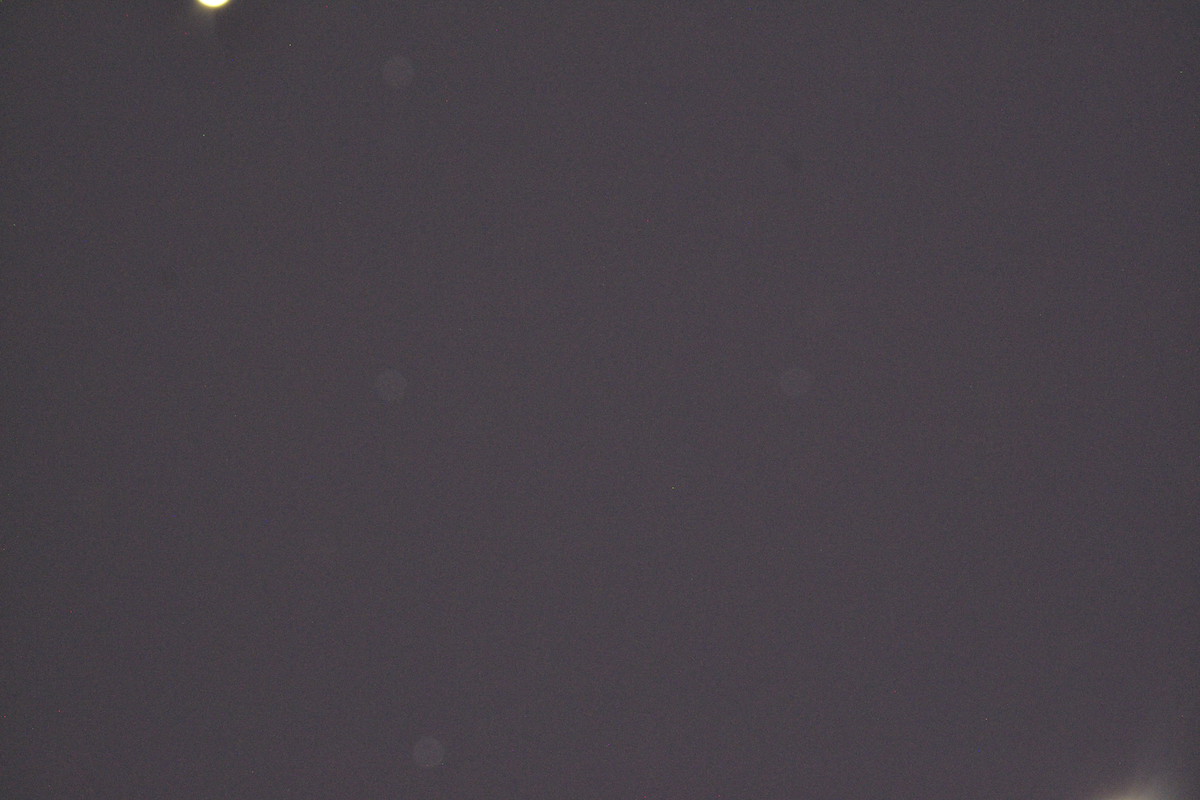
Tomorrow I plan to review the setup procedure for the tracking system. (The keypad is confusing and I’m a User Interface snob.) I also want to mark the focus tube with settings for prime focus and focus with eyepieces. Since I could not recall where that focus point was, I could not tell whether I was badly out of focus or just not aimed right.

Be First to Comment